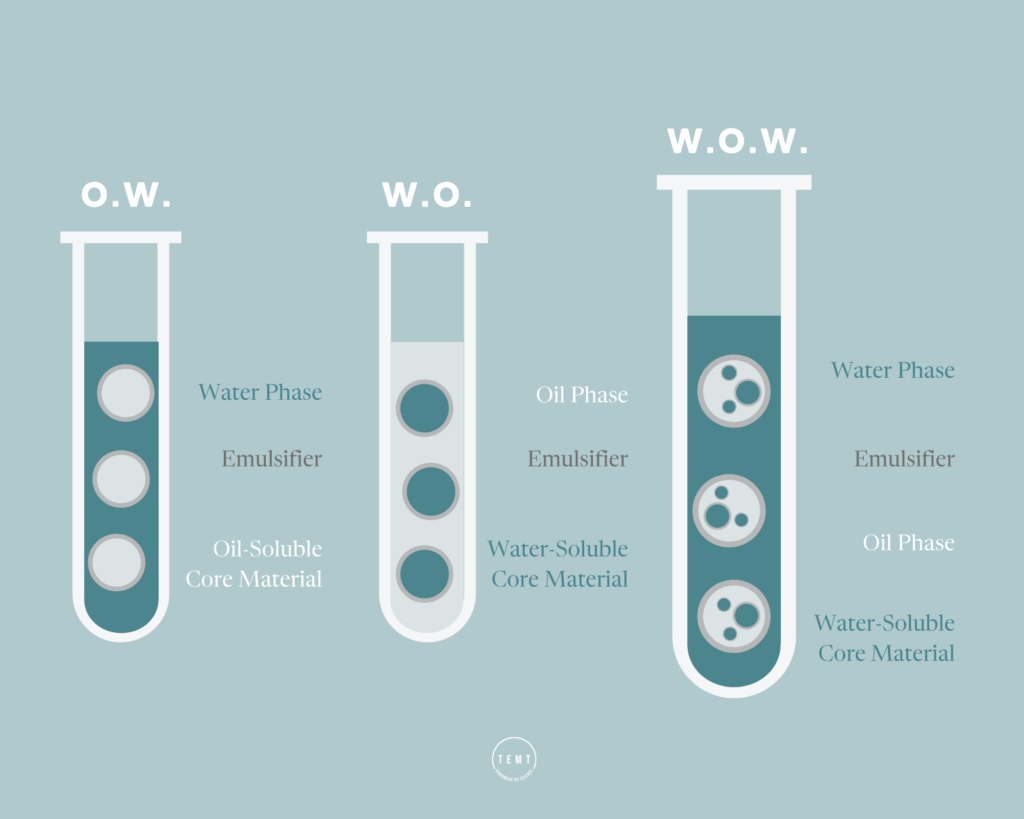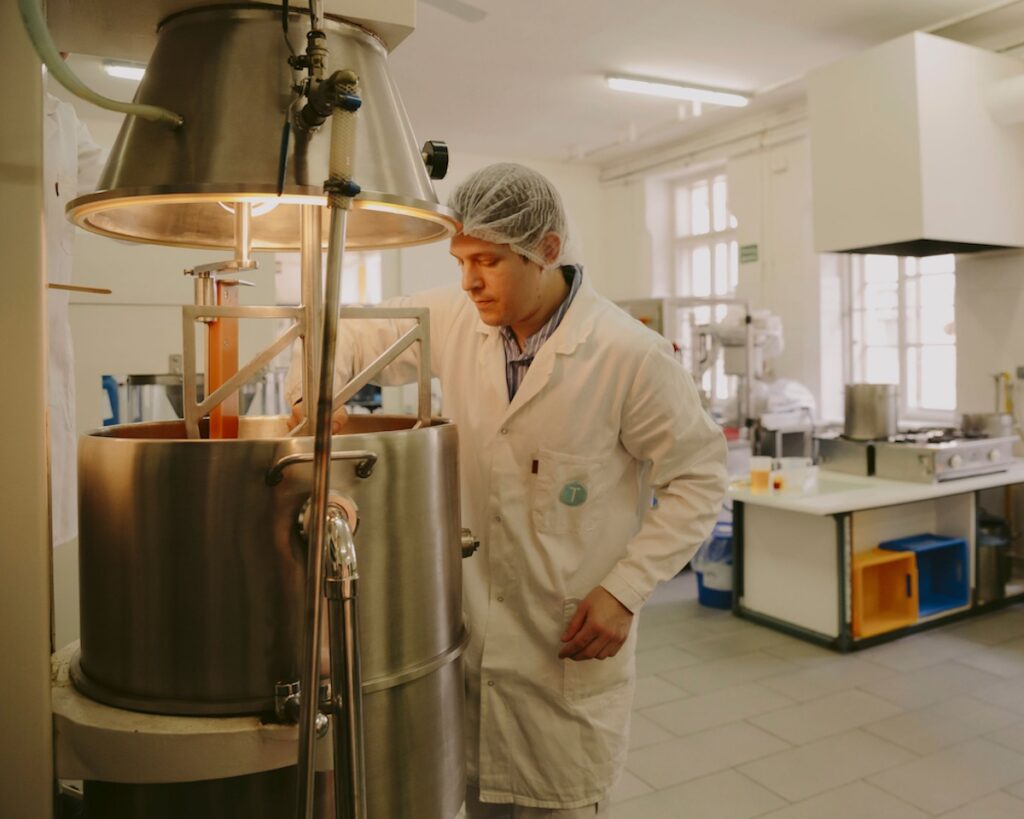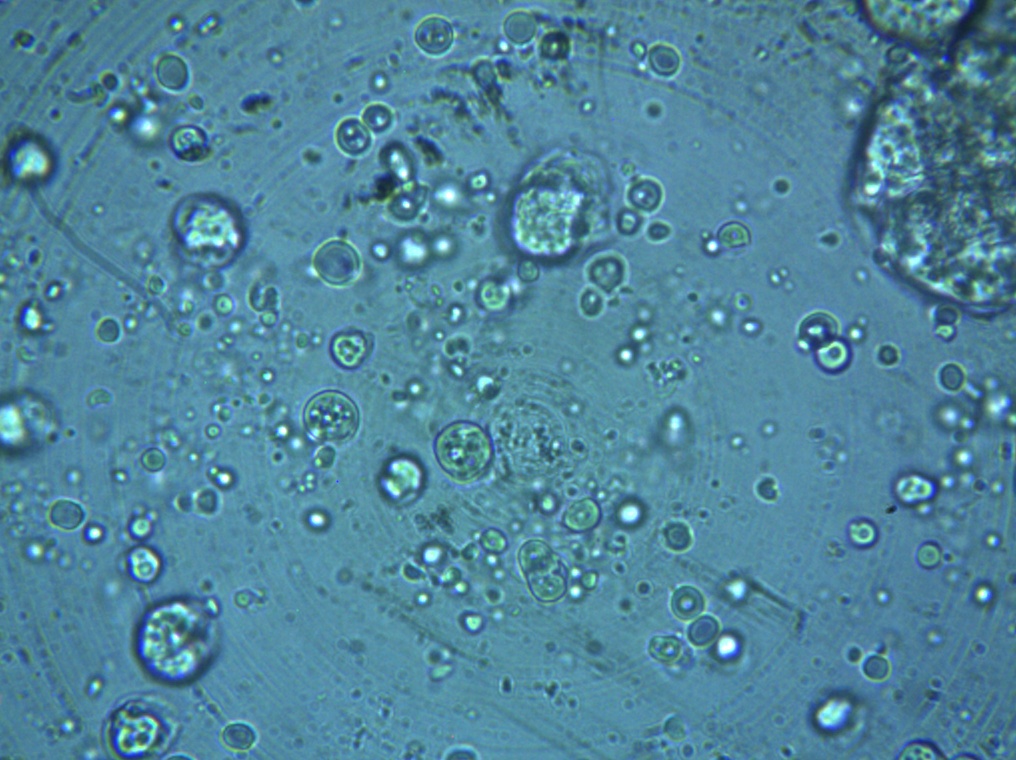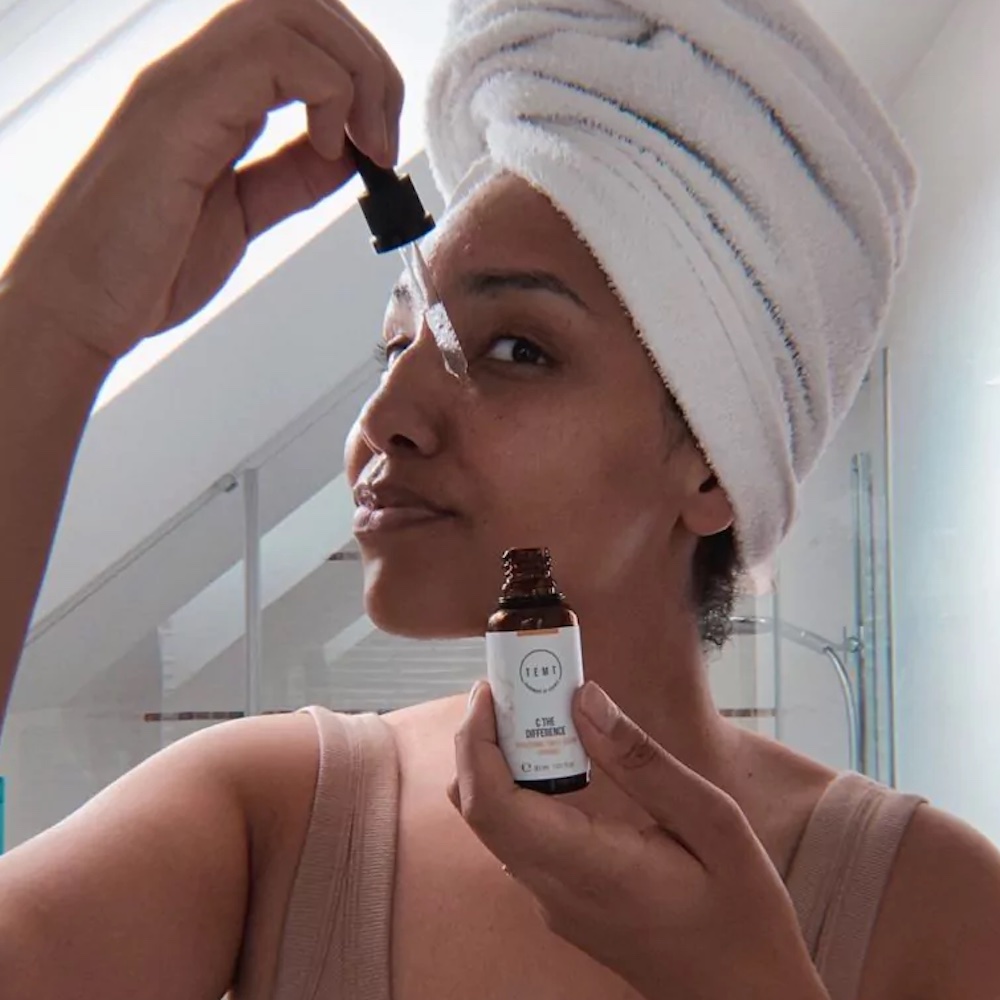Thank you for all the wonderful feedback you leave under our W.O.W. Eye Cream. To be quite frank, this cream is more than just WOW – can we give it a double WOW? There is so much behind this name!
On a side note: Dominik, our chemist kindly explained to us that W.O.W. has definitely nothing to do with the newest World of Warcraft Merchandise Coup.
Today, we are dedicating this blog post to a more scientific topic – the double-emulsion. This is the background of our W.O.W. Eye Cream. Ok, we will try to make this less scientific and take over the Chef Gordon Ramsay role to explain the emulsion behind this cream. Ready for a new salad dressing recipe? Then please follow Dominik to Hell’s Kitchen – em, no I mean to his lab!
What is an emulsion?
We can compare a cream emulsion with a salad dressing – with mustard!
You can mix a vinaigrette as long as you want, but eventually it separates in water/ vinegar and oil. But a tad of mustard would make a difference, the texture looks different and the taste – c’est magnifique!
Mustard is the emulsifier, which helps two liquids mix. You successfully created an oil in water emulsion (O/W) in which the oil droplets are finely dispersed in the water/ vinegar mixture. If you added too much oil, you might experience the opposite – a water in oil emulsion (W/O), seeing water drops dispersed in oil.

Let’s recap what we learned, adding an emulsifier, in our case the mustard, will help the liquids mix together. But unfortunately this is not the final answer, the emulsion will not stay stable for good. An emulsion is by definition a sensitive, unstable matter.
Double-Emulsions
Ok, let’s go back to our imaginary salad dressing: Now, what would you say if you could mix O/W and W/O together? This would result in a double emulsion – oil is dispersed in water and more water droplets in oil.
The production method of our W.O.W. Eye Cream
All this might sound easier than it is! All parameters required for the production of our W.O.W. Eye Cream must be precisely adhered to in order for the double emulsion to form in the first place.
And then there is the big question mark about stability. In fact, this has proved to be the most difficult and time-consuming issue during the production phase. After all, what good is the best double emulsion if it is only stable for 30 minutes?
This is the right time to briefly address the critical points in production.
The Ingredients
The most important ingredients in our W.O.W. Eye Cream is the emulsifier and oil. Just as much as the salt in your salad dressing!
Emulsifiers are surface-active agents which means that they float within the interfaces between water and oily phases and form links – the essential precondition for emulsifiers.
What makes an emulsifier “surface active” is related to the size of the hydrophilic (water-loving) portion of a molecule compared to the size of the lipophilic (oil-loving) portion.1
The oil plays a big role in this mix. It must not be too water-repellent (hydrophobic), because ultimately the oil is to absorb the second water phase, which is required for the W/O/W double emulsion.
The interaction between the emulsifier and the oil used is important for the double emulsion and must be precisely coordinated.

The salt serves for the stability of the emulsion and has to do with the osmotic pressure. Liquids of different concentrations, which are separated from each other by a permeable membrane, strive to equalize this difference in concentration. The resulting pressure would destroy the emulsion in the case of our W.O.W. Eye Cream. The salt therefore serves to keep the concentration balanced right from the start.
The Temperature
Now that we have explained the “basic” part of the emulsion, let’s move on to the next production steps.
The higher the temperature, the more lipophilic the emulsifier behaves. This property is essential for the formation of the W.O.W. Eye Cream.
At the beginning of the production process, the temperature is so high that the lipophilic properties predominate. Slow cooling of the emulsion as well as precisely timed homogenization leads to a reduction in droplet size. We finally reach the point where the water-loving properties of the emulsifier become more pronounced again.
It is precisely then, during the so-called phase inversion, that the final double emulsion is formed.
All In One: An Emulsion and Depot-Cream – that’s our W.O.W. Eye Cream
In conventional emulsions with a water and an oil phase, the active ingredients are distributed either in the water phase or in the oil phase according to their solubility.
At the latest after the application on the skin, they are exposed to the prevailing environmental conditions. UV radiation and oxygen radicals in particular are not only problematic for the skin, but sometimes also for the active ingredients in the cream.
In many cases, the active ingredients used are no longer active when they can finally be absorbed by the skin.

In double emulsion systems, it is all about the innermost phase, the second water phase, which is completely enclosed by the oil phase, that is best protected against environmental influences.
This is the case when using W.O.W. Eye Cream! Active ingredients and moisture are gradually released to the skin in a long-lasting manner. The additional encapsulation also prolongs the activity of the active ingredients, providing the skin with functional active ingredients for a longer period of time.
WOW. To be honest, I am now tempted to go into detail about the individual active ingredients, because they are actually very worth mentioning.
But no, let’s leave it for another day.
Do you have any questions or requests for future blog posts? Then leave me a comment. I look forward to it!
1 – Barrett-Hill, F. (2015, November 24). Emulsifiers in skin care: Purposes, Properties & Disadvantages- Retrieved from https://www.corneotherapy.org/articles/226-emulsifiers-in-skin-care





















